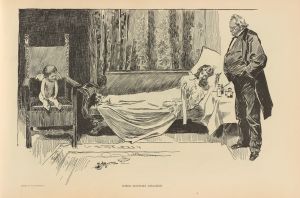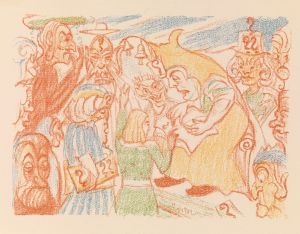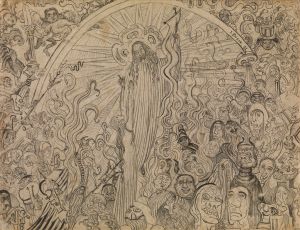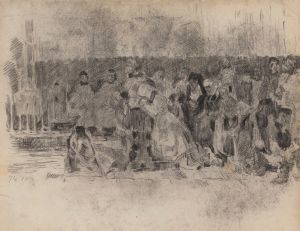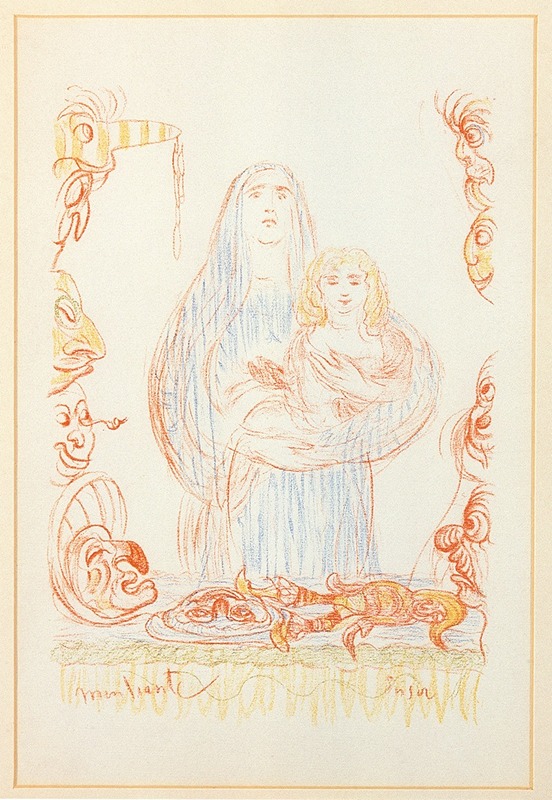
De bedelares
A hand-painted replica of James Ensor’s masterpiece De bedelares, meticulously crafted by professional artists to capture the true essence of the original. Each piece is created with museum-quality canvas and rare mineral pigments, carefully painted by experienced artists with delicate brushstrokes and rich, layered colors to perfectly recreate the texture of the original artwork. Unlike machine-printed reproductions, this hand-painted version brings the painting to life, infused with the artist’s emotions and skill in every stroke. Whether for personal collection or home decoration, it instantly elevates the artistic atmosphere of any space.
James Ensor, a prominent Belgian painter and printmaker, is known for his innovative and often provocative works that played a significant role in the development of Expressionism and Surrealism. One of his notable works is "De bedelares," which translates to "The Beggars" in English. This painting is a testament to Ensor's unique style and his ability to capture the complexities of human emotion and social commentary.
"De bedelares" was created during a period when Ensor was deeply engaged with themes of social inequality and the human condition. Ensor's work often reflects his fascination with the grotesque and the macabre, and "The Beggars" is no exception. The painting depicts a group of beggars, rendered in Ensor's distinctive style that combines elements of realism with fantastical and exaggerated features. The figures are often portrayed with distorted faces and exaggerated expressions, which serve to highlight their plight and the harsh realities of their existence.
Ensor's use of color in "De bedelares" is particularly striking. He employs a vivid palette that contrasts sharply with the somber subject matter, creating a sense of tension and unease. This use of color is characteristic of Ensor's work and contributes to the emotional impact of the painting. The bright, almost garish colors draw the viewer's attention and invite them to look closer, revealing the details and nuances of the scene.
The composition of "The Beggars" is carefully constructed to guide the viewer's eye across the canvas. Ensor often used unconventional perspectives and arrangements in his work, and this painting is no different. The figures are arranged in a way that creates a sense of movement and chaos, reflecting the instability and uncertainty of their lives. This dynamic composition is a hallmark of Ensor's style and adds to the overall impact of the painting.
James Ensor's work, including "De bedelares," is often seen as a critique of society and its treatment of the marginalized. By depicting beggars with such vivid detail and emotion, Ensor forces the viewer to confront the reality of their situation and consider the broader social implications. His work challenges the viewer to question their own perceptions and biases, making "The Beggars" not just a work of art, but a powerful social commentary.
Ensor's influence on the art world is significant, and his work continues to be studied and appreciated for its innovative approach and profound impact. "De bedelares" is a prime example of his ability to blend technical skill with deep emotional and social insight, making it a valuable piece in the study of modern art. Through this painting, Ensor invites viewers to engage with the complexities of human experience and reflect on the societal structures that shape our world.






